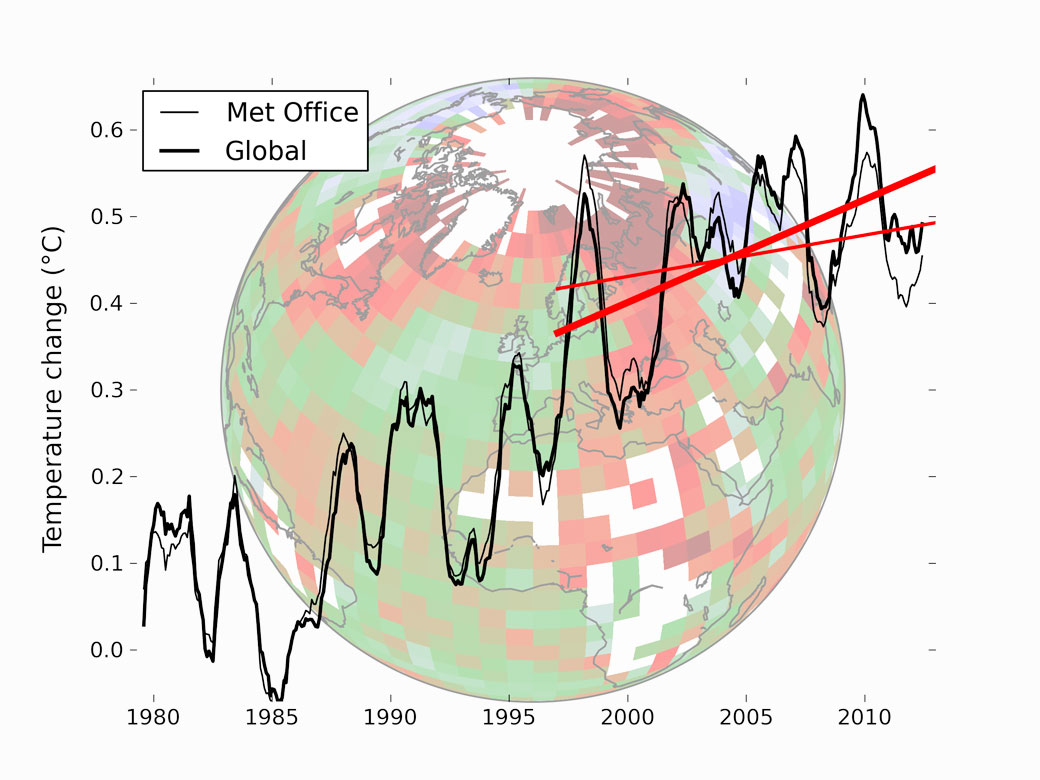TORONTO – New research by scientists at the University of Ottawa and the University of York in the United Kingdom believe they have found the missing heat in global climate models.

Many climate-change skeptics look to data that suggest that there has been a pause in global warming since 1997. Temperatures from 1997 to 2010 have barely increased according to current datasets.
However, due to the limits of global weather stations, there are important gaps in data that make the models incomplete. The Arctic and Antarctic are two such places.
Dr. Kevin Cowtan of the University of York, along with PhD student and cyrosphere specialist – someone who studies ice – Robert Way of the University of Ottawa, used satellite data to fill in the missing gaps.
Read more:Why climate change deniers believe global warming isn’t a problem, and why experts say they’re wrong
“It was well-known within the scientific community that there were issues in terms of coverage of how many weather stations were available both in the north and south pole,” Way told Global News.
“People know the Arctic is warming in a series of ways; you can see it in weather models, you can see it in satellite temperatures of the atmosphere…even in weather balloons and even the few isolated weather stations were showing a really rapid warming. But in terms of finding the best way of filling in the gaps of coverage, that was the challenge.”
Cowtan and Way used the dataset from the Met Office in the United Kingdom which had incomplete data.
“In our study, using their same record and using satellite data which do have that polar coverage, that there’s significant air temperature change that’s being missed that can have a very big influence on temperature trends over the past 15 years,” said Way.
Their results found that the surface air temperature rose more than double from current models missing that data.
The 1997-2010 models that didn’t include satellite data showed a temperature increase of just 0.05 C. But when satellite data was incorporated into a model it more than doubled the difference, raising it to 0.12 C.
The new data Cowtan and Way have compiled helps to provide a more complete dataset that climatologists can use when modelling climate change. The incomplete data isn’t meant to say that global warming has increased, but only that it hasn’t stopped, as some believe.
“It’s always a problem to be looking at short trends,” said Way.
“In a perfect world, down the road, I’d like to see other scientists try and address this issue as well and build on our work and come with a scientific criticism of our work and just try to find a fuller picture,” said Way. “Because at the end of the day, if we’ve advanced in some way the public discourse but also the scientific discourse, I think we can be pretty happy with what we’ve produced.”


Comments